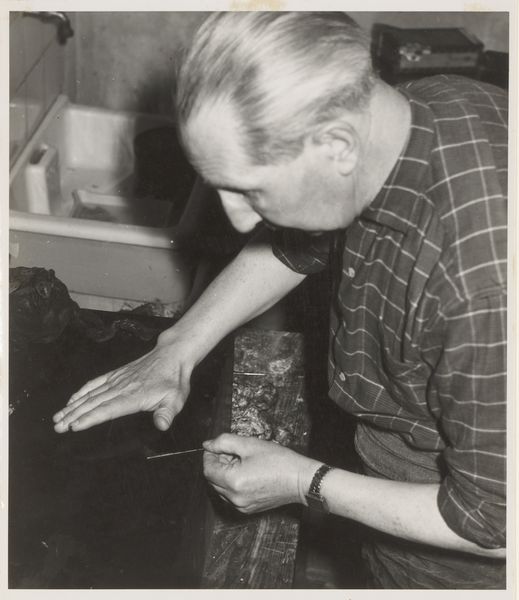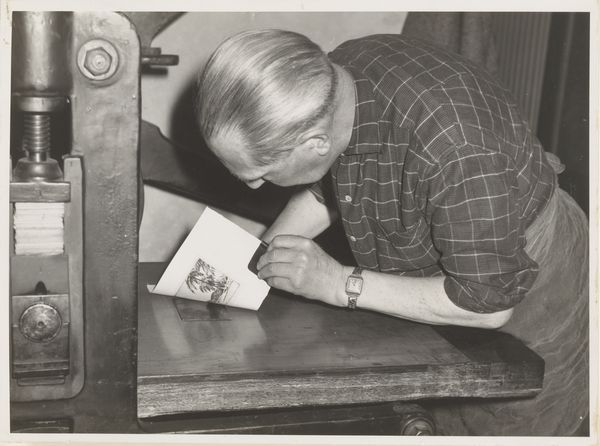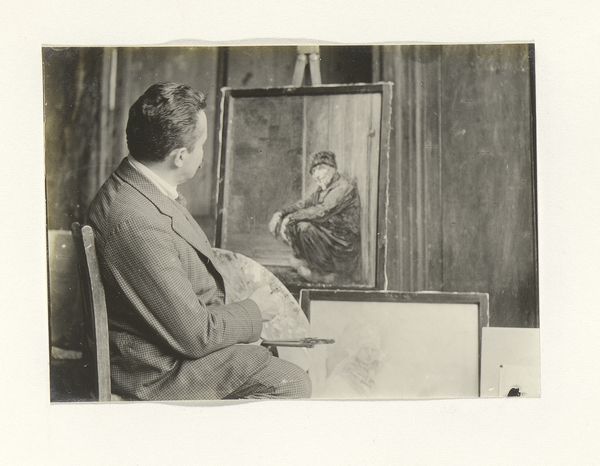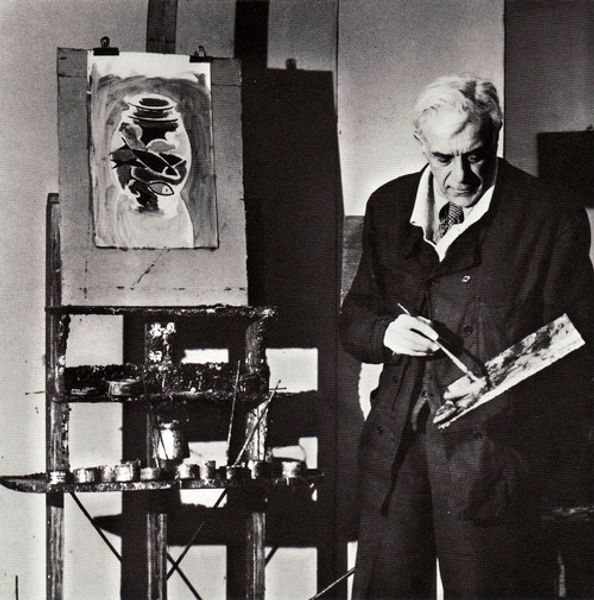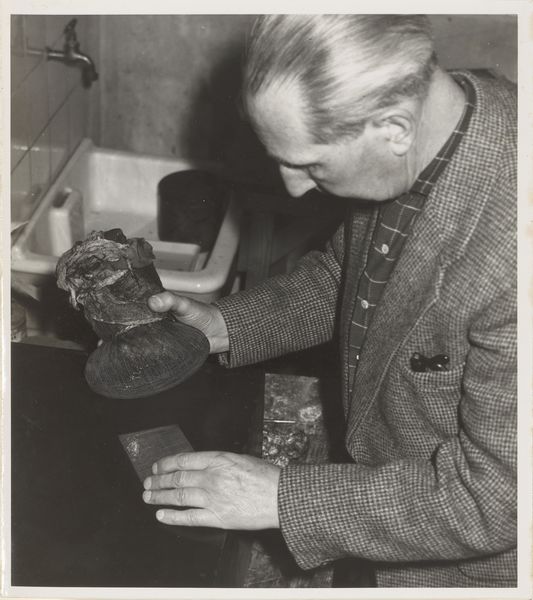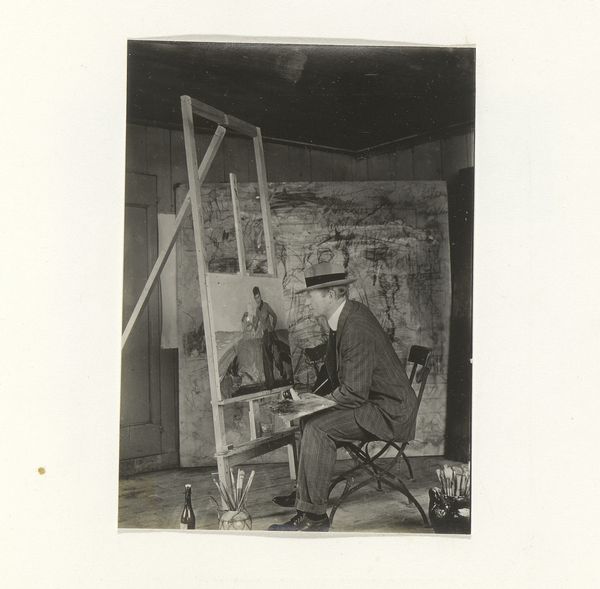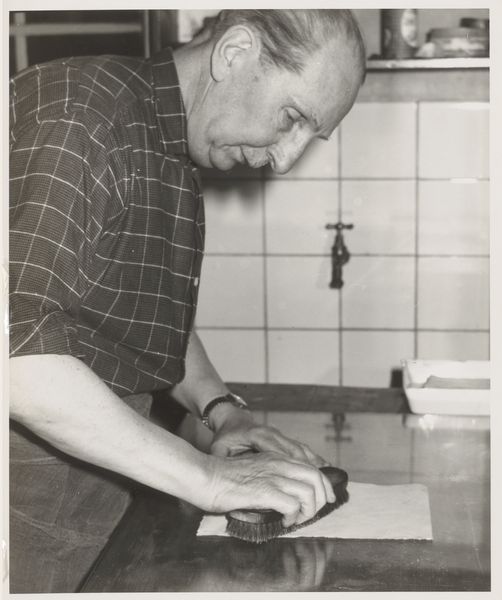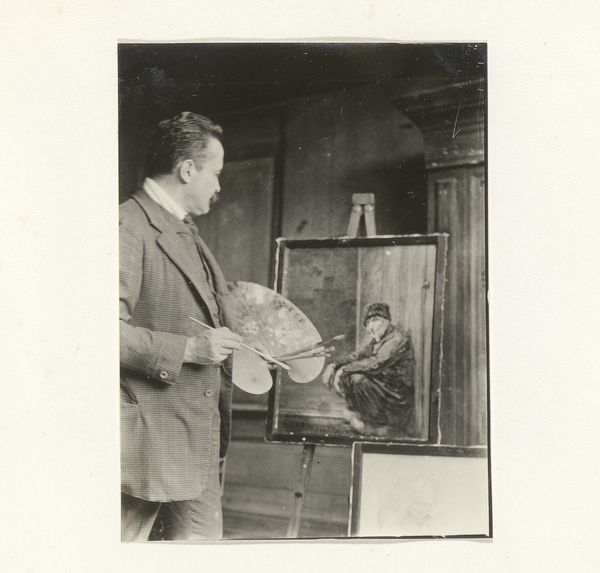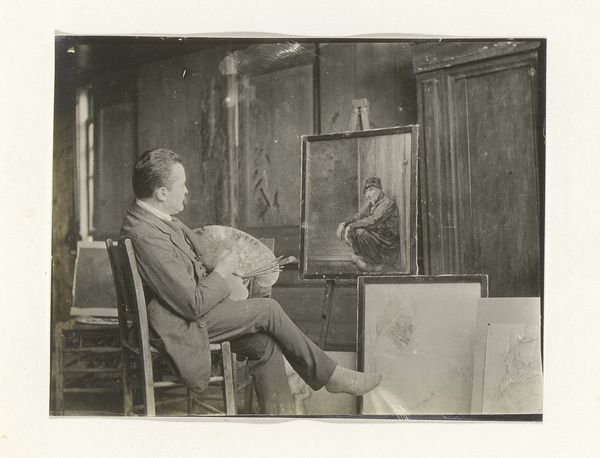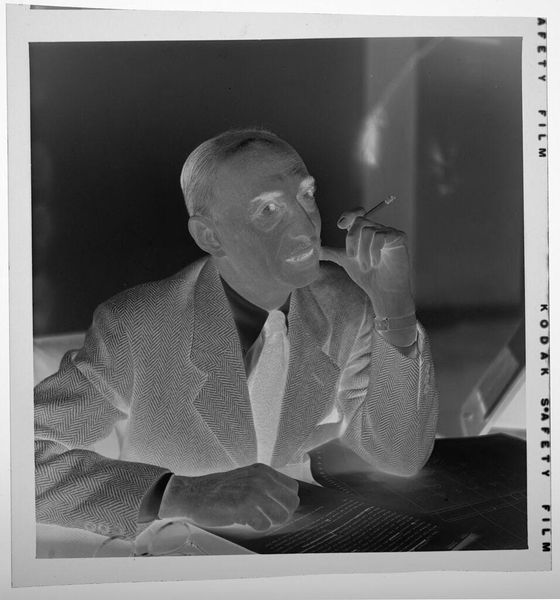
photography
#
portrait
#
photography
#
historical photography
Dimensions: height 121 mm, width 166 mm, height 129 mm, width 172 mm
Copyright: Rijks Museum: Open Domain
Curator: I find this monochrome portrait, titled "Portret van Jaap Dooijewaard in zijn atelier," quite evocative. It's a photograph, estimated to have been created sometime between 1910 and 1940. The texture gives it a slightly eerie tone, don’t you think? Editor: Indeed. My initial response is one of introspection. The limited tonal range lends itself to a concentration on form, particularly the lines created by the artist’s posture, hunched over what appears to be a working surface. It invites contemplation of his inner world, which given our understanding of intersectionality, may involve an understanding of social pressures too, wouldn't you agree? Curator: Absolutely. Dooijewaard is clearly engaged in the act of creation, his downward gaze perhaps symbolizing both focus and, dare I say, the burdens or anxieties artists face as they negotiate their position within various socio-political and economic contexts. Editor: Perhaps we should consider that it does not suggest burden as such. Consider instead the structural interplay between the sharp geometric shapes present as negative space in the background. They subtly mimic and contrast the organic curves of Dooijewaard's form, creating visual tension that heightens his figure, elevating the importance of what the figure is undertaking and adding to an atmosphere of intense focus rather than heavy responsibility. Curator: An astute point, but even that acute formal focus does not stand in isolation. Artists, their studios, their very existence, cannot escape external power structures. Is it too far to posit a dialogue between that background and the expectations projected onto him? He may exist within the intersection of personal expression and external pressure, thus becoming an active mediator between subjective desire and broader socio-economic contexts. Editor: I concede to the dialogue, yet what draws me more is his clothing. The textured tweed coat adds depth but doesn't compete with the clarity of the action. The photograph uses the interplay of light and shadow across the planes of the figure to capture the moment. It is not really speaking directly of social burdens or expectations; instead, we are witnessing the beauty of an act being undertaken. Curator: I appreciate your eye for detail and emphasis on aesthetic value, and yet I keep reflecting upon the circumstances. Editor: And it's in those differing views, the push and pull between structure and context, where art's true vibrancy resides. Curator: Precisely, perhaps we each offer a necessary piece.
Comments
No comments
Be the first to comment and join the conversation on the ultimate creative platform.
